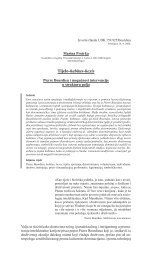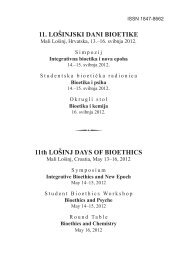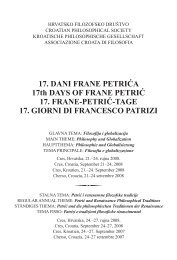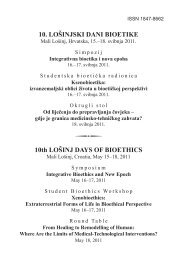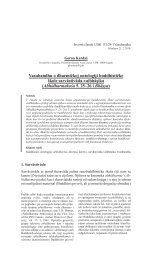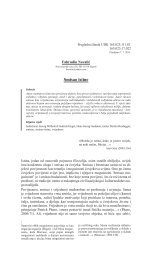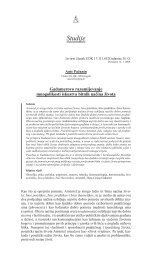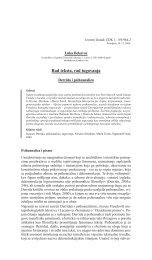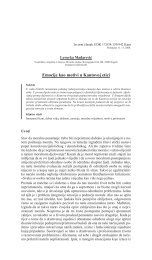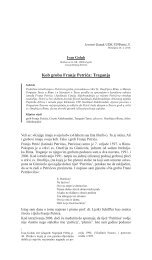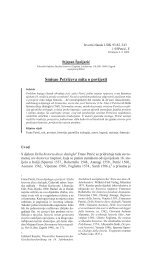Programska knjižica - Hrvatsko filozofsko društvo
Programska knjižica - Hrvatsko filozofsko društvo
Programska knjižica - Hrvatsko filozofsko društvo
Create successful ePaper yourself
Turn your PDF publications into a flip-book with our unique Google optimized e-Paper software.
eports. Bošković’s third valuable source for the topic of aurora borealis was<br />
the Moravian astronomer Christian Mayer, because the Ragusan in his treatise<br />
also applied Mayer’s method for the determination of the aurora height from a<br />
single position. Lastly, young Bošković shaped a scientific instruction “what<br />
to observe in these phenomena in future”. (IM)<br />
Four of the five propositions of Bošković’s dissertation deserve scientific<br />
commentary. In the second proposition Bošković depicts a method for the calaculation<br />
of the height of Earth’s atmosphere: taking that first solar rays are<br />
seen when the Sun is 18º under the horizon, he constructs the path of light,<br />
which, with two “reflections”, leads to atmospheric height of 20 km. Although<br />
Bošković’s result is acceptable in comparison with the contemporary measured<br />
results, it is rather the fruit of pure chance than of the sound model, since<br />
the passage of light through the atmosphere is much more complex than in<br />
Bošković’s model.<br />
The third proposition contains the main task of Bošković’s dissertation:<br />
determination of the aurora height. Based on the data collected by observing<br />
the phenomenon in Rome and in Paris on 19 October 1726, and with the help<br />
of planimetry and planar trigonometry, Bošković calculated the aurora height<br />
as being 1080 km.<br />
The fourth proposition solves the same problem of the aurora as observed<br />
on 16 December 1738. This time Bošković evaluated its height as being 1220<br />
km. The present results show that polar light appears in the atmospheric layer<br />
between 100 and 1000 km. Therefore Bošković’s result can be understood as<br />
a slightly exceeded value of the upper limit of the phenomenon. Inaccurate<br />
determination of the height for several hundreds of kilometers was obviously<br />
possible due to complex structure of the phenomenon. One should bear in<br />
mind that the regular geometrical shape of the polar light is actually a crude<br />
approximation.<br />
By using Mayer’s method, Bošković solved the theoretical problem in the<br />
fifth proposition: how to determine the height of auroral oval which is centred<br />
on the geographical pole and whose plane is orthogonal to the Earth’s rotation<br />
axis.<br />
In the sixth, last proposition of his dissertation Bošković adhered to<br />
Mairan’s explanation of the physical cause of polar light: Solar rotation, documented<br />
by the motion of solar spots, can lead to deformation of the solar<br />
atmosphere, which therefore obtains convex shape and is extended to ecliptic<br />
and flows into Earth’s atmosphere. By analysis and commentary of the<br />
conditions under which rarefied solar atmosphere mixes with the high rarefied<br />
layer of Earth’s atmosphere, Bošković elaborated Mairan’s hypothesis and<br />
184



